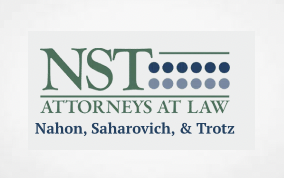Cannabis industry stakeholders waiting for the US Food and Drug Administration (FDA) to forge a regulatory path forward for cannabidiol (CBD) in consumer products such as conventional foods and dietary supplements will now be waiting on Congress to act. FDA announced, on January 26, 2023, that its existing food and dietary supplements regulatory pathways are not appropriate for CBD products and that the agency does not intend to initiate rulemaking for CBD. Rather, FDA called for a new regulatory pathway for CBD products that “balances individuals’ desire for access to CBD products with the regulatory oversight needed to manage risks.”1Concurrent with this policy announcement, FDA denied three citizen petitions from trade associations that asked, among other things, for FDA to issue a regulation allowing CBD products to be marketed as dietary supplements. Companies waiting for certainty on the future of CBD product regulation will have to wait until Congress acts, perhaps, to amend the Federal Food, Drug, and Cosmetic Act to establish a unique regulatory pathway for CBD.
This Advisory contextualizes FDA’s policy announcement in the recent history of its actions with respect to CBD, summarizes the key points of FDA’s announcement, and covers the implications for stakeholders.
Background
Growth in the CBD industry followed significant changes in the legal status of hemp and its derivatives, most notably, the Agriculture Improvement Act of 2018, Public Law 115-334 (known as the 2018 Farm Bill). The 2018 Farm Bill legalized the cultivation and sale of hemp, defined as “[T]he plant Cannabis sativa L. and any part of that plant . . . with a delta-9 tetrahydrocannabinol concentration of not more than 0.3 percent on a dry weight basis.”2The law also amended the definition of marijuana in the Controlled Substances Act (CSA) to exclude hemp and its derivatives from the CSA’s definition of controlled substances.3Congress expressly preserved, however, FDA’s authority to regulate products containing CBD (derived from hemp) and other products containing hemp or hemp-derived compounds.4Thus, while hemp is no longer a controlled substance, FDA retained authority to regulate products such as CBD.
Indeed, FDA issued a statement on the day the 2018 Farm Bill passed, touting its awareness of the growing public interest in cannabis and cannabis-derived products, including CBD, and announcing the importance of clarifying FDA’s regulatory authority over those products.5FDA explained that it was unlawful to market CBD in food or dietary supplements, but also indicated that—
Pathways remain available for the FDA to consider whether there are circumstances in which certain cannabis-derived compounds might be permitted in a food or dietary supplement. Although such products are generally prohibited to be introduced in interstate commerce, the FDA has authority to issue a regulation allowing the use of a pharmaceutical ingredient in a food or dietary supplement. We are taking new steps to evaluate whether we should pursue such a process. However, the FDA would only consider doing so if the agency were able to determine that all other requirements in the FD&C Act are met, including those required for food additives or new dietary ingredients.6
Subsequently, FDA formed a “high-level internal agency working group” to explore potential pathways for dietary supplements and/or conventional foods containing CBD to be lawfully marketed, including consideration of the necessary statutory or regulatory changes and the public health impact of marketing such products.7FDA also convened a widely attended public hearing to obtain scientific data and information about the safety, manufacturing, product quality, marketing, labeling, and sale of products containing cannabis or cannabis-derived compounds. While FDA sorted out its approach to CBD, industry waited, and some companies sought to lawfully market CBD as a dietary supplement within the existing regulatory framework. For example, one company submitted a new dietary ingredient notification (NDIN) to FDA on March 3, 2021 for full-spectrum hemp extract (FSHE) which contains CBD.8FDA rejected the NDIN, however, having found that the FSHE, which contains CBD, was a CBD product precluded from marketing as a dietary supplement by the exclusion provision of the FD&C Act.9Following this rejection, it became clear to many that FDA’s position was settled and that FDA believed that lawful marketing of CBD as a dietary supplement was impossible absent FDA proceeding through notice and comment rulemaking to issue a regulation finding that CBD would be lawful in such products. Three citizen petitions, submitted in 2019, 2020, and 2022, requested that FDA take such action, though each would be denied alongside the January 2023 policy announcement, as we note below.
FDA’s January 2023 CBD Policy Announcement
FDA’s work and progress on regulating CBD took a turn on January 26, 2023, when FDA took coordinated action to issue the CBD policy announcement and deny the three citizen petitions that sought rulemaking on CBD. Principal Deputy Commissioner Janet Woodcock’s announcement stated that after careful review by an internal FDA working group, FDA concluded that a new regulatory pathway for CBD was necessary; FDA’s current conventional food and dietary supplement regulatory pathways would not be appropriate for CBD. Such a pathway, would balance consumers’ desire for access to CBD products with the regulatory oversight needed to manage risks. According to FDA, safety concerns and limited ability to manage risks associated with CBD products under the existing food and dietary supplement authorities drove FDA’s policy determination. FDA noted that the agency reviewed studies pertaining to Epidiolex, published scientific literature, information submitted to the CBD public docket, and studies conducted and commissioned by FDA. It concluded that the use of CBD raises various safety concerns, especially for long-term use, including potential risks to the liver and male reproductive system and the risk for medication interactions. FDA also expressed concern about CBD exposures by certain vulnerable populations, such as children, and those who are pregnant. Ultimately, the agency could not see how CBD products could meet safety standards applicable to dietary supplements or food additives—for example, FDA lacked adequate evidence to determine the level of CBD that can be consumed, and the duration of consumption, before causing harm.
The agency all but explicitly asked Congress to act, stating that “FDA is prepared to work with Congress on this matter” and “FDA looks forward to working with Congress to develop a cross-agency strategy for the regulation of these products to protect the public’s health and safety.” It provided a light roadmap, including recommendations for including safeguards and oversight to manage and minimize risks associated with use of CBD products, such as clear labels, prevention of contaminants, CBD content limits, and minimum purchase age.
Finally, FDA turned to the topic of compliance actions and essentially preserved the status quo. Per Dr. Woodcock, “FDA will continue to take action against CBD and cannabis-derived products to protect the public, in coordination with state regulatory partners, when appropriate. FDA will remain diligent in monitoring the marketplace, identifying products that pose risks and acting within our authorities.” As FDA-watchers are aware, the agency has not initiated any industry-wide compliance action, but has more selectively targeted companies marketing products that in FDA’s view, threaten the public health and/or are marketed to children. The agency has particularly focused its compliance actions on products that make claims to treat diseases or other specific health conditions.10
Implications
FDA’s action (or inaction), depending on your viewpoint, likely disappointed some in industry who expected that FDA would issue a regulation. Ultimately, FDA’s stance leaves Congress in the driver’s seat when it comes to establishing a regulatory path forward for CBD. In fact, shortly after FDA’s announcement, Rep. Morgan Griffith (R-VA) (House Energy & Commerce Oversight Subcommittee Chair) announced that he was in contact with FDA regarding the CBD announcement and “look[s] forward to working with the FDA so we may create a safe pathway for these products to come to market.”11Rep. Griffith, and others in Congress, would not be starting from scratch. Dozens of bills, including those on which he worked, have been introduced in both the House and Senate that propose to regulate cannabis and/or CBD. Arnold & Porter’s comprehensiveCannabis State-of-Play Advisory highlights the legislation related to cannabis and CBD introduced by the 117th Congress.
As noted above, FDA did not announce a new compliance policy or stance with respect to CBD, and we expect that FDA will continue to regulate CBD largely the same as it has in the preceding years—by taking selective compliance action, particularly with respect to disease claims or products marketed to children, as it deems necessary. We will continue to monitor developments with respect to both CBD and cannabis.
© Arnold & Porter Kaye Scholer LLP 2023 All Rights Reserved. This Advisory is intended to be a general summary of the law and does not constitute legal advice. You should consult with counsel to determine applicable legal requirements in a specific fact situation.
Footnotes
1 Statement from Janet Woodcock, M.D., Principal Deputy FDA Commissioner, FDA Concludes that Existing Regulatory Frameworks for Foods and Supplements are Not Appropriate for Cannabidiol, Will Work with Congress on a New Way Forward (Jan. 26, 2023),availablehere.
2 7 U.S.C. 1639o(1).
3 Section 12619(b) of the 2018 Farm Bill also amended Schedule I of the CSA to exclude the THC found in hemp from the definition of “tetrahydrocannabinols.”
4See2018 Farm Bill, section 10113, § 297D(c)(1).
5 By the time the 2018 Farm Bill passed, FDA had already approved a highly purified form of CBD in a prescription drug, Epidiolex.
6 Statement from FDA Commissioner Scott Gottlieb, M.D., on signing of the Agriculture Improvement Act and the Agency’s Regulation of Products Containing Cannabis and Cannabis-Derived Compounds (Dec. 20, 2018),availablehere.
7 Statement for FDA Commissioner Scott Gottlieb, M.D., On New Steps to Advance Agency’s Continued Evaluation of Potential Regulatory Pathways for Cannabis-Containing and Cannabis-Derived Products (Apr. 2, 2019),availablehere.
8 FDA Response to NDI 1199 – Full Spectrum Hemp Extract (FSHE), FDA-2021-S-0023-0050,availablehere.
9See21 U.S.C. 321(ff) (excluding from the dietary supplement definition, an article that is approved as a new drug or authorized for investigation as a new drug for which substantial clinical investigations have been instituted and made public, which was not before such approval or authorization marketed as a dietary supplement or foodunlessFDA issued a regulation finding that the article would be lawful under the FD&C Act). FDA reached this conclusion because CBD is the active ingredient in an approved drug product, and the existence of substantial clinical investigations involving CBD had been made public. Additionally, FDA determined that CBD was not marketed as a dietary supplement or conventional food before it was authorized for investigation as a new drug.
10See, e.g., FDA Warning Letter to Naturally Infused LLC (Nov. 16, 2022),availablehere, (“[T]he Agency is particularly concerned that some of your products are in forms that are appealing to children. For example, your CBD Lollipops, CBD Gummies, and Delta-8 THC Gummies are in forms that would be attractive to children and could easily be mistaken for traditional foods that are commonly consumed by children. Furthermore, you market other products that consumers may confuse with traditional foods for humans, including CBD Infused Sugar and CBD and Delta-8 THC Infused coffees. Therefore, there is a risk that consumers of these products, including children, will unintentionally consume CBD or Delta-8 THC ingredients. Additionally, we note that the CBD coffee products appear to contain caffeine. Evidence suggests that CBD may affect caffeine metabolism and may increase and/or prolong caffeine’s effects.”).
11 Griffith Offers to Work with FDA to Develop CBD Pathway,InsideHealthPolicy(Feb. 2, 2023),availablehere.
The content of this article is intended to provide a general guide to the subject matter. Specialist advice should be sought about your specific circumstances.



































